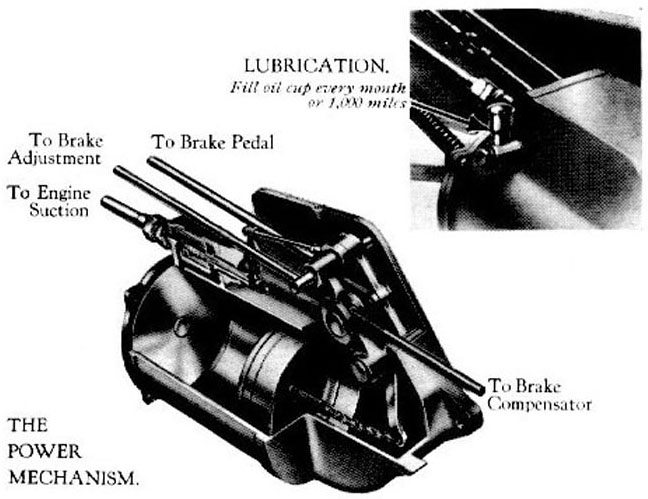
 |
The force on the hinge C is in part due
to the piston and in part due to the driver's pressure on
the pedal. It will be noticed that the driver's foot is
the fulcrum of this system and it is due to this fact
that the driver at all times retains a direct and
sensitive control over the braking effort applied by the
mechanism. Any tendency on the part of the piston to
exert an increased force on the lever A necessarily re-acts
on the pedal. If the driver merely exerts a light
pressure on the pedal, the position of H is such that any
tendency for the piston to move far along the cylinder
will cause the lever A to swing about H in such a way as
to close the valve G, thereby restricting the vacuum in
the cylinder to an amount proportional to the force
exerted on the pedal. It has already been explained that
the net effect of the piston is to treble the force
exerted by the driver on the pedal over the first half of
the range. The diagram on page 21
illustrates this graphically and also shows the leverage
effect obtained with greater pedal pressures. The fact that the power mechanism is in working order can be very simply tested as follows. |